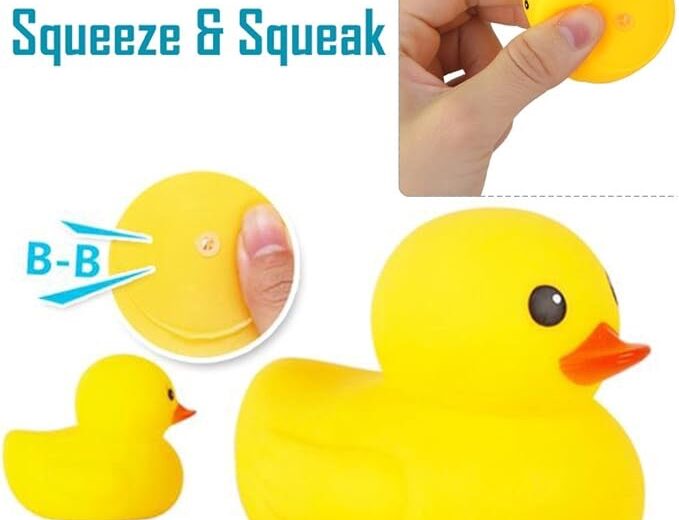The Science Behind the Squeak: Why Rubber Ducks Squeak — Rubber ducks. These iconic bath time companions have been bringing joy to kids (and the young at heart) for generations. But have you ever stopped to think about what makes these simple toys so special? Sure, their cheerful colors and adorable designs are part of the appeal, but there’s something else that sets them apart: their signature squeak.
The Science Behind the Squeak: Why Rubber Ducks Squeak

But why do rubber ducks squeak?
The answer lies in the ingenious design of these little quackers. It all comes down to a clever combination of air pressure, a small hole, and a special component called a “squeaker.”
The Role of Air Pressure
When you squeeze a rubber duck, you’re essentially compressing the air inside its hollow body. This increases the air pressure within the duck.
The Squeaker: The Heart of the Squeak
Inside the duck, you’ll find a small plastic piece known as the squeaker. This piece is typically shaped like a disc with a small opening. As the air pressure inside the duck increases, the air is forced out through this opening in the squeaker.
The Sound of Squeak
As the air rushes through the squeaker, it causes the thin plastic of the squeaker to vibrate rapidly. This vibration is what produces the familiar squeaking sound. The faster the air moves, the higher the pitch of the squeak.
The Hole: A Necessary Component
You might have noticed that most rubber ducks have a small hole, usually on the bottom. This hole is crucial for the squeaking mechanism to work. It allows air to enter the duck when it’s not being squeezed, ensuring that there’s always air available to be compressed and forced through the squeaker.
A Symphony of Simplicity
The squeaking sound of a rubber duck is a testament to the power of simple physics. By understanding the principles of air pressure and sound waves, toy designers have created a timeless toy that continues to captivate and entertain.
So, the next time you pick up a rubber duck and give it a squeeze, take a moment to appreciate the clever engineering behind that delightful squeak. It’s a small detail that makes a big difference in the world of fun and play.
No, not all rubber ducks have the squeaker installed in them. And by the way dogs might like your rubber duck if it squeaks because they like squeaking toys.
Images used from An Amazon Rubber Duck Squeaker.
Do you have any squeaking rubber ducks feel free to share about them in the duckie comments below.
Steve is a collector of rubber ducks. At SteveZ DuckZ, Steve will share off his rubber duck collection and share blog post relating to rubber ducks. If you love rubber ducks, please follow on social media or subscribe!
Discover more from SteveZ DuckZ
Subscribe to get the latest posts sent to your email.



Comments are closed.